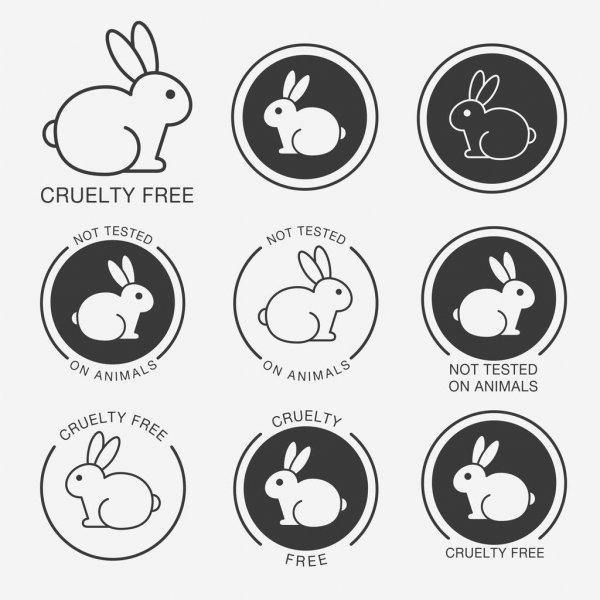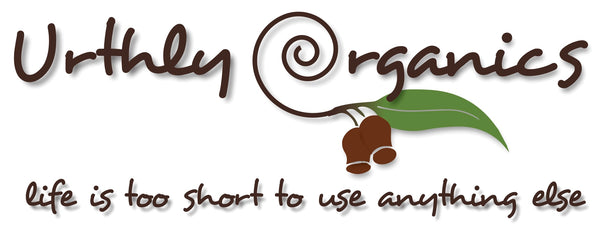
Cruelty-Free or Not Cruelty-Free? How to Navigate the Compassion Maze
Share
Every day, we as consumers seek out products to suit our values. We browse the supermarkets, online stores, markets, and shop fronts in search of items we want or need, paying attention to what sets each item apart. For many, it’s price and quality. For others, the focus is on the environmental impact. When we decide on our purchase, our choice makes us typically feel fulfilled in some form. However, what if our choices were doing more harm than good? The products break during or before use, the quality is not what was expected, it looks nothing like the advertisement… or, your product contributes devastation on the environment or animals it claims to protect.
This blog focusses on the ‘cruelty-free’ and ‘vegan’ loopholes businesses use to greenwash products. But first, a few definitions:
‘Greenwashing’ refers to the insincere and superficial display of concern towards environmental issues by organisations[1] such as labelling items that take years to break down as ‘biodegradable’, sustainable palm oil and its derivatives, third party animal testing, and not paying workers a fair wage for manufacturing ‘eco-friendly’ products. The use of branding can mislead the public into buying unethically[2].
‘Blood products'[3] are companies or items that meet the non-animal testing rule but have products that are indirectly sourced from by-products of animal harm, displacement, and/or death.
‘Vegan’[4] is a lifestyle or product that does not contain animal-derived food and ingredients. Most commonly, the belief is focused on food products. However, the term can also be used in other areas to ensure consumer awareness.
‘Cruelty-free’[5] (of cosmetics or other commercial products) is a product manufactured or developed by methods that do not involve cruelty to animals, such as testing.
Cruelty-Free Certification on Logo Use
Internationally, Cruelty-Free certification varies. There are currently four licensed organisations that provide certification: PETA’s Beauty without Bunnies program, Leaping Bunny Certification (via CCIC), Leaping Bunny Certification (via Cruelty-Free International), and Choose Cruelty-Free. Within these organisations, the standards of what is considered ‘cruelty-free’ are anywhere from consistent. Governing organisations may focus on certification that solely acknowledges a product or range being animal-testing free[6]. Other organisations go further, allowing no animal testing or blood products throughout the company[7].

Additionally, non-official logos exist that also cause some ambiguity. Within uncertified cruelty-free logos, there may be a mixed understanding of what a brand’s position on the issue actually is. Some businesses may consider cruelty-free to only relate to animal testing. Others may use only indirect animal products, such as slaughterhouse by-products. Some may be entirely vegan.

With such a broad and vague range of beliefs towards what constitutes ‘cruelty-free’ status, it makes it difficult for consumers to understand how ethical some products actually are. The greenwashing and loopholes businesses use to make responsibility fall onto the consumer to ensure that their impact aligns with your beliefs. Here are some things you can do to help ensure your cruelty-free products are what they claim to be:
Ask the business’ what makes this product or company vegan and/or cruelty-free?’
The question allows for the businesses to provide you with a response for making a decision. In some cases, businesses may be unaware that they are using ingredients that harm the natural environment or fauna.
Check the Ingredients
The ingredients are often a good indicator of whether a product aligns with your values. Has it got unfamiliar ingredients? Has it got ingredients that have harmful effects on ecosystems? Is the product derived from cruelty-free ingredients? In some cases, these claims will easily be identified or refuted based on product ingredient knowledge. However, in other products, additional research may be required.
Follow Certification and Whistleblowing Organisations
Certification organisations will usually release brands in a list to provide consumers with information on who is certified to make a claim. Whistleblowing organisations call out businesses and hold them to account for false claims. The organisations allow for consumers to receive some peace of mind in making a purchase, while avoiding products with unsubstantiated claims.

Urthly Organics
Urthly Organics’ mission is to put ‘planet over profit’[8], having an overall positive impact on society and the environment before delivering returns. We do not support animal cruelty and are aiming to become Cruelty-Free International and B Corp certified by the end of the end. The majority of our range is vegan, with no blood products present across the ingredient supply chains. Within our non-vegan products, milk or honey is sourced only from trusted sources.
At Urthly Organics, we are certified Palm Oil and Derivative free by Orangutan Alliance[9]. We are also endorsed by Palm Oil Investigations[10]. These organisations focus on ensuring palm oil and derivative-free supply chains for products, preventing deforestation, animal cruelty, and displacement (including trafficking). For us, we believe that any products containing palm oil cannot be cruelty-free nor vegan due to the damage caused.
When using animal derivatives, we make a conscious effort to shop compassionately. Our goat and camel milk are sourced from very well looked after animals. We buy our goat milk in small quantities from a local goat milk farm in Cohuna, Victoria[11]. We often travel to pick up the milk, allowing us to see that the goats are loved, have space, and are happy (getting a lot of pats and care). The same goes for the camel milk that we source from Kyabram, Victoria[12]. The honey we use is extracted from small beekeeping businesses in Hurstbridge[13], Victoria, and the Huon Valley[14], Tasmania. We choose them because of their attention to harvest at the appropriate times, ensuring the bee’s health and longevity. The keepers in Hurstbridge also serve as a bee rescue, preventing homelessness and death. The choices we make towards the welfare and life of animals allow us to provide goods to our supporters that do align with their expectations and values.
We hope that soon, we will have the proper documentation to display these values officially. However, we hope you know that when you shop at Urthly Organics, you are choosing a transparent and ethics-focused product.

[1] Kenton, W., via Investopedia (2020), ‘Greenwashing’: https://www.investopedia.com/terms/g/greenwashing.asp
[2] Green & Thistle (2020), ‘What is Greenwashing? Examples [2020]’: https://greenandthistle.com/what-is-greenwashing/
[3] Choose Cruelty Free (2020), ‘Cruelty Free Accreditation’: https://www.choosecrueltyfree.org.au/cruelty-free-accreditation
[4] Merriam Webster (2021), ‘vegan’: https://www.merriam-webster.com/dictionary/vegan
[5] Oxford Language Dictionairy (2021), ‘Cruelty-Free’, via Google: https://www.google.com/search?q=cruelty+free+definition&oq=cruelty+free&aqs=chrome.4.69i59j69i57j0i67i433j46i175i199j0i67j69i60j69i61j69i60.7711j1j4&sourceid=chrome&ie=UTF-8
[6] Rauch, J., 2020, ‘What Does “Cruelty-Free” Mean? The Truth May Surprise You’, Public Goods: https://blog.publicgoods.com/what-does-cruelty-free-actually-mean/
[7] Ethical Elephant (2021), ‘Which Cruelty-Free Logos Can We Trust in 2021? We Compare Them All!’, Ethical Elephant: https://ethicalelephant.com/cruelty-free-logos/
[8] Urthly Organics, 2021, ‘Our Impact’, Urthly Organics: https://urthlyorganics.com.au/pages/our-impact
[9] Orangutan Alliance (2021), ‘Orangutan Alliance: Palm Oil Free Certification’: https://orangutanalliance.org/
[10] Palm Oil Investigations (2021), ‘POI: Palm Oil Investigations’: https://www.palmoilinvestigations.org/
[11] Windella Farm (2021), ‘Windella Farm’: https://www.windellafarm.com.au/about-us
[12] The Camel Milk Co (2021), ‘The Camel Milk Co.’: https://www.camelmilkco.com.au/
[13] Bee Rescue (2021), ‘Bee Rescue Melbourne’: https://beerescue.com.au/
[14] Grumpy Bee (2021), ‘Grumpy Bee Honey’: https://www.grumpybee.com.au/
Sources:
Bee Rescue Melbourne: https://beerescue.com.au/
(The) Camel Milk Co.: https://camelmilkco.com.au/index.php/about/our-story
Choose Cruelty Free: https://www.choosecrueltyfree.org.au/cruelty-free-accreditation
Cruelty Free International: https://www.crueltyfreeinternational.org/what-we-do/corporate-partnerships/leaping-bunny-programme
Ethical Elephant: https://ethicalelephant.com/cruelty-free-logos/
Green and Thistle: https://greenandthistle.com/what-is-greenwashing/
Grumpy Bee: https://www.grumpybee.com.au/
Investopedia: https://www.investopedia.com/terms/g/greenwashing.asp
IPA Australia: https://www.ipaustralia.gov.au/tools-resources/certification-rules/586044
Orangutan Alliance: https://orangutanalliance.org/whats-the-issue/alternative-names-for-palm-oil/
Peta: https://www.peta.org/about-peta/how-is-a-company-certified-as-cruelty-free/
Windella Farm: https://www.windellafarm.com.au/about-us
Main Image Source:
Deposit Photos (2021), Cruelty Free Rabbit Logos: https://depositphotos.com/vector-images/cruelty-free.html
